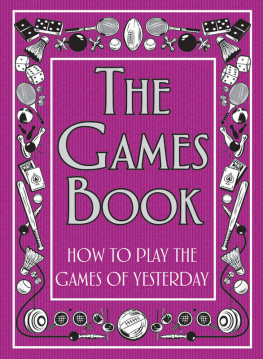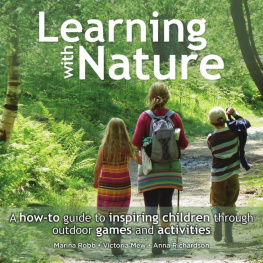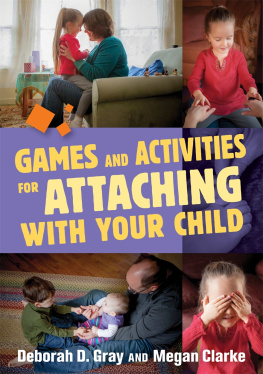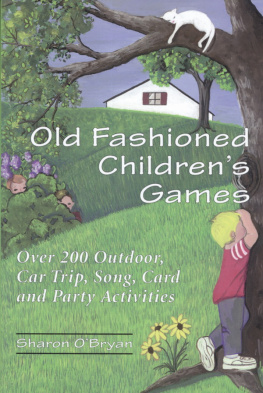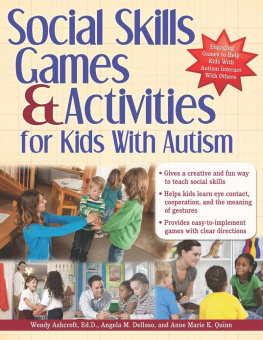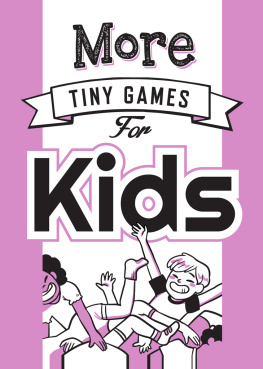Title Page
100 GAMES FOR CHILDREN
Warm-ups, Cool-downs, Skills Development, Parachute and Playground Games
PS Quick
Publisher Information
Published in 2014 by
Andrews UK Limited
www.andrewsuk.com
The right of PS Quick to be identified as the Author of this Work has been asserted in accordance with the Copyright, Designs and Patents Act 1998
Copyright 2014 PS Quick
All rights reserved. No part of this publication may be reproduced, stored in a retrieval system, or transmitted, in any form or by any means without the prior written permission of the publisher, nor be otherwise circulated in any form of binding or cover other than that in which it is published and without a similar condition being imposed on the subsequent purchaser. Any person who does so may be liable to criminal prosecution and civil claims for damages.
Introduction
Participation in physical games offers many benefits to children. Games not only help to keep children fit but motivate them to develop positive attitudes and understand rules. They learn and develop skills that will hopefully encourage them to engage in sports and other physical activities in later life.
Children learn to listen to instructions, to share and co-operate, to problem solve and challenge themselves and most important of all interact with others, being valued as part of the group.
This book is packed with ideas for childrens games. There are 100 games in all which cover warm-ups, cool-downs, parachute and playground games. There is also a section of games that develop the skills needed for a variety of sports and team games that children will meet when they are older
Although in different sections many of the games are interchangeable and can be used in a variety of situations, including childrens parties.
Warm-ups and cool-downs
Warm-up activities are essential for preparing the body for activity. They are designed to focus the mind, increase the heart and breathing rate, and warm up the muscles so there is less risk of injury.
In the same way the body needs to cool down after strenuous activity so that it can slow down and return to normal . Activities used in warm-ups can also be used to cool-down but using low intensity movements instead. They should include some stretching so that the muscles remain flexible and relaxed.
Traffic Lights
On the call of red children must stand motionless. On amber they walk while on green they run. The actions could be varied on amber or green at the beginning of a new game. For example hop and jump could be used for amber and green instead of walk and run.
Top Gear
Each child holds a large ball which represents the steering wheel of a car. They must not drop this ball.
Children move according to the instruction given. First gear is a slow walk. Second gear a brisk walk. Third gear a jog. Fourth gear a run. Reverse is moving slowly backwards. Crash is freezing on the spot.
This game trains children to move around safely and develop motor control.
Park and Ride
Name four sections of the hall or playground as Park and Ride centres near where the children live. These could be also the names of villages, areas of a large town etc. or real Park and Rides such as Thornhill, Redbridge, Seacourt, and Peartree.
Children play the game Top Gear, as above, but when the teacher calls out the name of a Park and Ride centre, such as Thornhill, children must move to that area in fourth gear. On arrival they park their car next to another, change cars by swapping their ball with another child, and move off in first gear.
Park and ride trailers
Each child has a large ball as a steering wheel and pretends to drive a car according to teachers instructions. First gear is a slow walk. Second gear a brisk walk. Third gear a jog. Fourth gear a run. Reverse is moving slowly backwards. Crash is freezing on the spot.
Four areas of the work space are designated as Park and Ride centres such as Thornhill, Redbridge, Seacourt, Peartree. When the teacher calls out the name of a Park and Ride centre, such as Thornhill, children must move to that area in fourth gear.
On arrival they park their car behind another car. The two cars move off together in first gear but stop to put the ball from the rear car into the ball basket then continue in first gear until another instruction is given.
North, South, East, West
Make each wall a different part of the compass and explain that the children have to move to the correct place on command. Once they have understood the idea vary the way in which children move or the parts of the body on which they move. For example, travel to the north using your hands and feet.
Rainbows in the Rain
An equal number of beanbags in four colours, enough for the whole class are needed. The beanbags are scattered around the room. The children move around and between them as instructed. For example tiptoe around the beanbags, jog around, run around etc. When the teacher shouts Rain each child takes a beanbag. They then have to get into a group of four where each child has a different coloured beanbag and put the beanbags into an arc on the floor to represent a rainbow.
Balance in the Hoop
Children each have a hoop and space them evenly on the floor. They sit inside to listen to instructions on how to play the game. Children move in different ways as instructed and then balance inside the hoop on the part of the body given.
Vary the pace and the movement. For example skip quickly around the hoops or crawl slowly around the hoops. Then give a command such as Balance on your bottom inside the hoop or Balance on one knee and one elbow inside the hoop.
Pirates and Islands
Each child starts the game by sitting inside a hoop which represents an island. They then move around to instructions such as hop around the islands or crawl around the islands etc. Start the game with gentle movements to warm up before more energetic ones.
On the shout of Pirates children have to get back to an island so they stand inside a hoop. Each time one or more hoops can be removed so that some children cannot find a free island. There cannot be more than one person in the hoop.
The game came be varied by shouting Pirates 2 or Pirates 3, etc. This time there have to be that specific number of children inside the hoop. Children are out if there is no hoop or they cannot make up the number specified. For example on Pirates 3 there has to be exactly three pirates in the hoop. If the number is less those children are out.
Use mats instead of hoops so that bigger groups of children can retreat to the islands when pirates are sighted.
Treasure Islands
Hoops representing islands are placed, with spaces in between, in one half of the work area. Beanbags are scattered in the other half.
Children are asked to walk or hop, jump, skip etc. around the islands (the hoops) but when the teacher calls Treasure children must run to the other half of the workspace to collect a bag of treasure (the beanbag) and then run back to an island and sit on it.
The game can be varied by taking a hoop away each time so that there are not enough islands for everyone or calling Treasure 2 so that there are two children with two bags of treasure on each island.
Shadows
Children work in pairs and move in different ways as instructed by the teacher, for example Move on your hands and feet.
Children take turns to be the leader and must copy exactly what their partner is doing, like a shadow. The aim is to stay as close to their partner as possible.
As a warm up start with gentle movements and increase to more energetic ones. If used as a cool down activity then start with energetic movements and move onto gentle movements. The activity can be varied by moving on different parts of the body, changing direction or speed. The leader could also decide independently how to move.
Next page

